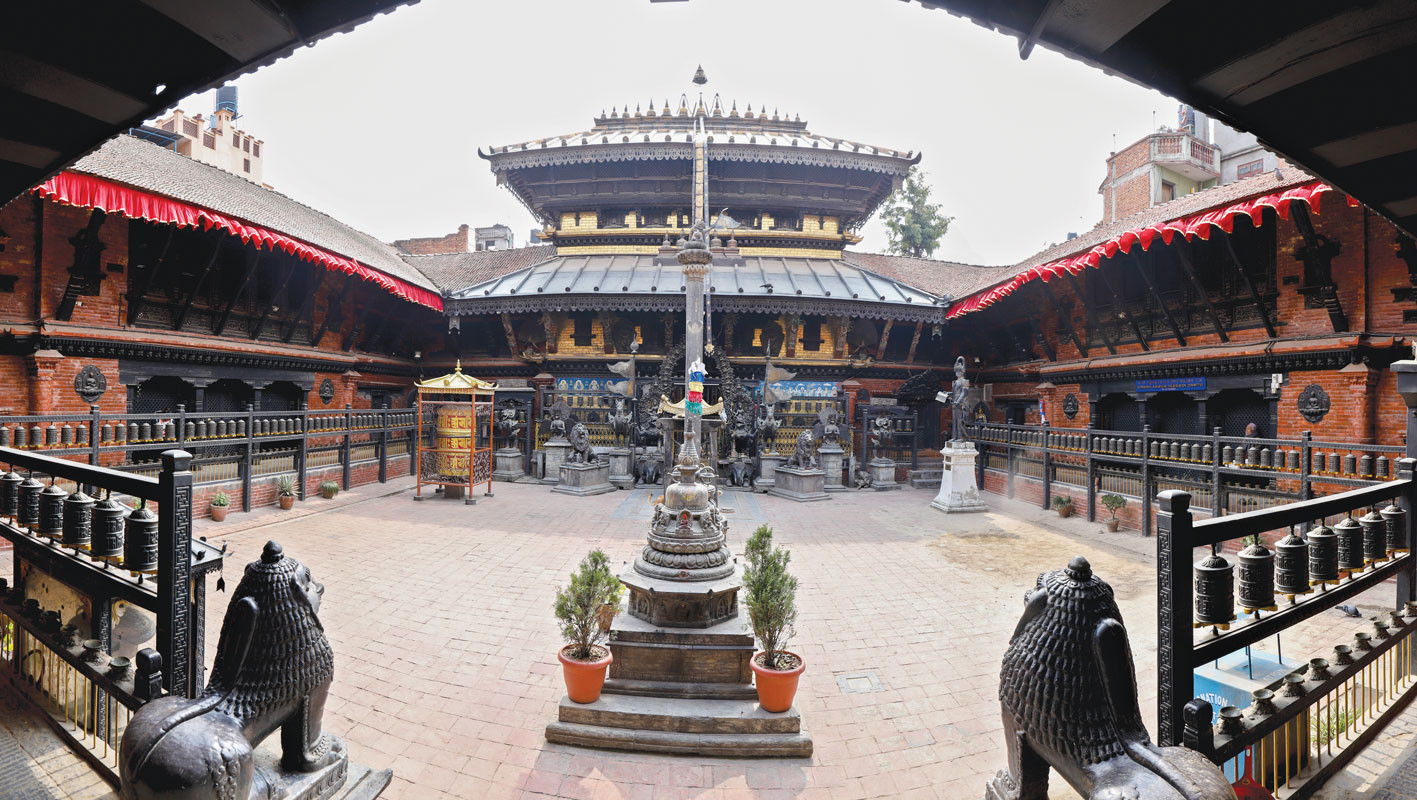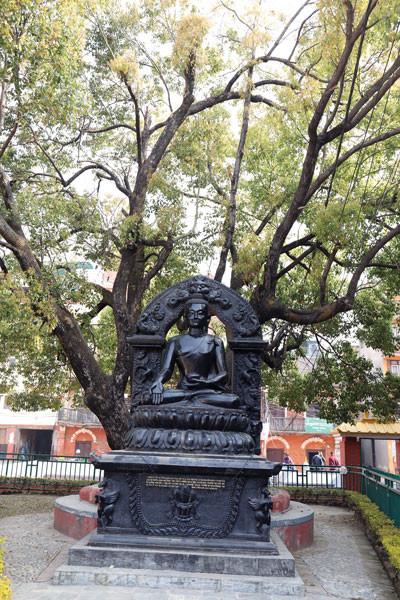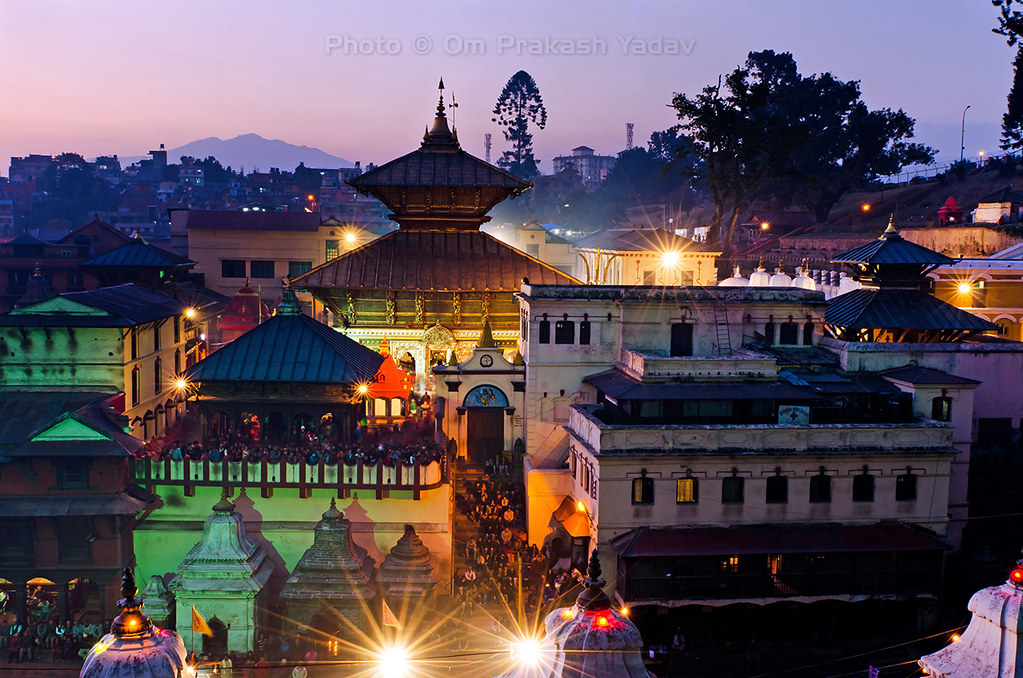Patan, one of the largest cities in Nepal is mostly famous for its historical and cultural features. Known as Yala in Nepali Bhasha (Newari language), Patan has been an epic center of craftsmanship since medieval Nepal. It is believed to be built during the third century BC by the Kirat Dynasty which was later expanded by Licchavis in the sixth century. Gradually, it was expanded immensely by the Mallas in the medieval period. Along with its tradition of arts and crafts, Patan is rich in cultural heritage.
Side by side, it is also known as the city of festivals and feasts, fine ancient art and manufacturing, and design hub of metal, stone, and wood carvings which can be widely observed in its buildings and public spots (Bahal, water spouts, and courtyards). Patan holds a major significance in Buddhist and Hindu cultures and its influence can be felt with a full display of religious art, temples, and monasteries. There are around 1,200 Buddhist monuments in this city with several Hindu temples including Krishna Mandir and Baglamukhi.
It has been believed that in 250 BC emperor Ashoka visited Kathmandu Valley and had built four ancient stupas at the four cardinal directions of Patan
Despite having several diverse attractions, Patan Mangalbazar, an area located at Patan Durbar Square has become a center of attraction. But, there is more to Patan beyond Mangalbazar. Most of the tourists visiting Patan are limited to Mangalbazar, Krishna Temple, Durbar Square, and Baglamukhi Temple. However, there are other attractions that should be frequented to know more about the historical and cultural significance of Patan.
Here are other attractions of Patan mentioned below:
Pim Bahal Pond
Pim Bahal Pond is one of the unheard attractions of Patan. Lots of domestic and foreign tourists visiting Patan miss this pond since it is a hidden gem of the Patan, with a three-tiered Chandeswari Temple that was built in the 14th century. According to the locals of Pim Bahal, this pond was built to overcome the water shortage. The people living in Lalitpur had faced acute water shortage in the 14th century, necessitating the need for a pond. Pim Bahal Pond is currently being renovated.
Rudra Varna Mahavihar
This is a Buddhist Monastery made out of images and statues of metal stone and wood. It is located at Wokhu Bahal in Patan with a belief that Kings in ancient times were crowned in this monastery. This monastery was built by Lichhavi King Shiva Deva in the sixth century AD. There are 15 gold plated Chaityas kept on the rooftop of the temple. Passing through the gateway, you are welcomed by two stone-carved lions. You can also go to Ubaha Gathicha where three deities Shakyamuni Buddha, Chaitya, and Lokeswara are situated.

Ashoka Stupa
It has been said that this city was built in the shape of Buddhist Dharma-Chakra that is four mounds situated at the perimeter of Patan, one at each corner of its major points. These mounds are also known as Ashoka Stupas. Based on the history, it has been believed that in 250 BC emperor Ashoka visited Kathmandu Valley and had built four ancient stupas at the four cardinal directions of Patan area that are situated at Pulchowk, Lagankhel, Ebahi, and Teta respectively.
Hiranya Varna Mahavihar (Golden Temple)
Hiranya Varna Mahavihar monastery also known as Golden Temple is located at the Kwa Bahal. It is one of the major attractions of Patan as the monastery is gold-colored, hence the name, Golden Temple. The temple is beautifully decorated with prayer wheels, more than a dozen bronze statues of gods, goddesses, and protectors, such as lions, elephants. It was built in the 12th century by King Bhaskar Verma.
Nagbahal

Nagbahal is the heart of the Patan city that has two major historic and religious attractions. One is a stone water spout and another is a black statue of Lord Buddha. The ancient history of the stone water spout can be traced back to the 11th century and is also known as Nag Bahal hiti. Around 5,000 residents live in this area, and most of them are from the Newari community with a Buddhist background.
Tushahity (The Royal Bath)
Tushahity is a masterpiece of stone carving that is made for royalty. According to the locals in ancient times, kings used to take bath at Tushahity that is located at Patan Durbar Square. This Royal Bath has been decorated with 74 statues of god and goddess, made out of stone. The royal family used to take bath at the spout and made those statues of god and goddesses so that they could worship all deities at once.
Sundhara (Golden Water Spout)
Most people are aware of the golden water spout located in Kathmandu but there is another golden water spout in Patan. People used to be dependent on this spout for water but owing to the dense population in the area, there are constraints in water sources these days.
 Nepal
Nepal
 India
India
 Afghanistan
Afghanistan
 Albania
Albania
 Algeria
Algeria
 American Samoa
American Samoa
 Andorra
Andorra
 Angola
Angola
 Anguilla
Anguilla
 Antarctica
Antarctica
 Antigua and Barbuda
Antigua and Barbuda
 Argentina
Argentina
 Armenia
Armenia
 Aruba
Aruba
 Australia
Australia
 Austria
Austria
 Azerbaijan
Azerbaijan
 Bahrain
Bahrain
 Bangladesh
Bangladesh
 Barbados
Barbados
 Belarus
Belarus
 Belgium
Belgium
 Belize
Belize
 Benin
Benin
 Bermuda
Bermuda
 Bhutan
Bhutan
 Bolivia
Bolivia
 Bosnia and Herzegovina
Bosnia and Herzegovina
 Botswana
Botswana
 Brazil
Brazil
 Brunei
Brunei
 Bulgaria
Bulgaria
 Burkina Faso
Burkina Faso
 Burundi
Burundi
 Cambodia
Cambodia
 Cameroon
Cameroon
 Canada
Canada
 Cape Verde
Cape Verde
 Caribbean Netherlands
Caribbean Netherlands
 Cayman Islands
Cayman Islands
 Central African Republic
Central African Republic
 Chad
Chad
 Chile
Chile
 China
China
 Christmas Island
Christmas Island
 Cocos (Keeling) Islands
Cocos (Keeling) Islands
 Colombia
Colombia
 Comoros
Comoros
 Congo, Democratic Republic of the
Congo, Democratic Republic of the
 Congo, Republic of the
Congo, Republic of the
 Cook Islands
Cook Islands
 Costa Rica
Costa Rica
 Cote d Ivoire
Cote d Ivoire
 Croatia
Croatia
 Cuba
Cuba
 Curaçao
Curaçao
 Cyprus
Cyprus
 Czech Republic
Czech Republic
 Denmark
Denmark
 Djibouti
Djibouti
 Dominica
Dominica
 Dominican Republic
Dominican Republic
 East Timor
East Timor
 Ecuador
Ecuador
 Egypt
Egypt
 El Salvador
El Salvador
 Equatorial Guinea
Equatorial Guinea
 Eritrea
Eritrea
 Estonia
Estonia
 Ethiopia
Ethiopia
 Falkland Islands (Malvinas)
Falkland Islands (Malvinas)
 Faroe Islands
Faroe Islands
 Federated States of Micronesia
Federated States of Micronesia
 Fiji
Fiji
 Finland
Finland
 France
France
 French Guiana
French Guiana
 French Polynesia
French Polynesia
 Gabon
Gabon
 Georgia
Georgia
 Germany
Germany
 Ghana
Ghana
 Gibraltar
Gibraltar
 Greece
Greece
 Greenland
Greenland
 Grenada
Grenada
 Guadeloupe
Guadeloupe
 Guam
Guam
 Guatemala
Guatemala
 Guernsey
Guernsey
 Guinea
Guinea
 Guinea-Bissau
Guinea-Bissau
 Guyana
Guyana
 Haiti
Haiti
 Honduras
Honduras
 Hong Kong
Hong Kong
 Hungary
Hungary
 Iceland
Iceland
 Indonesia
Indonesia
 Iran
Iran
 Iraq
Iraq
 Ireland
Ireland
 Isle of Man
Isle of Man
 Israel
Israel
 Italy
Italy
 Jamaica
Jamaica
 Japan
Japan
 Jersey
Jersey
 Jordan
Jordan
 Kazakhstan
Kazakhstan
 Kenya
Kenya
 Kiribati
Kiribati
 Korea, North
Korea, North
 Korea, South
Korea, South
 Kuwait
Kuwait
 Kyrgyz Republic
Kyrgyz Republic
 Kyrgyzstan
Kyrgyzstan
 Laos
Laos
 Latvia
Latvia
 Lebanon
Lebanon
 Lesotho
Lesotho
 Liberia
Liberia
 Libya
Libya
 Liechtenstein
Liechtenstein
 Lithuania
Lithuania
 Luxembourg
Luxembourg
 Macao
Macao
 Macedonia
Macedonia
 Madagascar
Madagascar
 Malawi
Malawi
 Malaysia
Malaysia
 Maldives
Maldives
 Mali
Mali
 Malta
Malta
 Marshall Islands
Marshall Islands
 Martinique
Martinique
 Mauritania
Mauritania
 Mauritius
Mauritius
 Mayotte
Mayotte
 Mexico
Mexico
Moldova
 Monaco
Monaco
 Mongolia
Mongolia
 Montenegro
Montenegro
 Montserrat
Montserrat
 Morocco
Morocco
 Mozambique
Mozambique
 Myanmar (Burma)
Myanmar (Burma)
 Namibia
Namibia
 Nauru
Nauru
 Netherlands
Netherlands
 New Caledonia
New Caledonia
 New Zealand
New Zealand
 Nicaragua
Nicaragua
 Niger
Niger
 Niue
Niue
 Norfolk Island
Norfolk Island
 Northern Mariana Islands
Northern Mariana Islands
 Norway
Norway
 Oman
Oman
 Pakistan
Pakistan
 Palau
Palau
 Palestine
Palestine
 Panama
Panama
 Papua New Guinea
Papua New Guinea
 Paraguay
Paraguay
 Peru
Peru
 Philippines
Philippines
 Poland
Poland
 Portugal
Portugal
 Puerto Rico
Puerto Rico
 Qatar
Qatar
 Reunion
Reunion
 Romania
Romania
 Russia
Russia
 Rwanda
Rwanda
 Saint Barthélemy
Saint Barthélemy
 Saint Kitts and Nevis
Saint Kitts and Nevis
 Saint Lucia
Saint Lucia
 Saint Martin
Saint Martin
 Saint Vincent and the Grenadines
Saint Vincent and the Grenadines
 Samoa
Samoa
 San Marino
San Marino
 Sao Tome and Principe
Sao Tome and Principe
 Saudi Arabia
Saudi Arabia
 Senegal
Senegal
 Serbia and Montenegro
Serbia and Montenegro
 Seychelles
Seychelles
 Sierra Leone
Sierra Leone
 Singapore
Singapore
 Sint Maarten
Sint Maarten
 Slovakia
Slovakia
 Slovenia
Slovenia
 Solomon Islands
Solomon Islands
 Somalia
Somalia
 South Africa
South Africa
 South Sudan
South Sudan
 Spain
Spain
 Sri Lanka
Sri Lanka
 St. Helena
St. Helena
 St. Pierre And Miquelon
St. Pierre And Miquelon
 Sudan
Sudan
 Suriname
Suriname
 Swaziland
Swaziland
 Sweden
Sweden
 Switzerland
Switzerland
 Syria
Syria
 Taiwan
Taiwan
 Tajikistan
Tajikistan
 Tanzania
Tanzania
 Thailand
Thailand
 The Bahamas
The Bahamas
 The Gambia
The Gambia
 Togo
Togo
 Tonga
Tonga
 Trinidad and Tobago
Trinidad and Tobago
 Tunisia
Tunisia
 Turkey
Turkey
 Turkmenistan
Turkmenistan
 Turks and Caicos Islands
Turks and Caicos Islands
 Tuvalu
Tuvalu
 Uganda
Uganda
 Ukraine
Ukraine
 United Arab Emirates
United Arab Emirates
 United Kingdom
United Kingdom
 United States
United States
 Uruguay
Uruguay
 US Minor Outlying Islands
US Minor Outlying Islands
 Uzbekistan
Uzbekistan
 Vanuatu
Vanuatu
 Vatican City (Holy See)
Vatican City (Holy See)
 Venezuela
Venezuela
 Vietnam
Vietnam
 Virgin Islands (British)
Virgin Islands (British)
 Virgin Islands(U.S.)
Virgin Islands(U.S.)
 Wallis and Futuna Islands
Wallis and Futuna Islands
 Western Sahara
Western Sahara
 Yemen
Yemen
 Yugoslavia
Yugoslavia
 Zaire
Zaire
 Zambia
Zambia
 Zimbabwe
Zimbabwe


